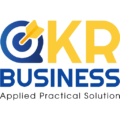For those individuals and organizations who want and will implement OKR-targeted management methods, here are 16 “Golden” takeaways from many businesses around the world that have been continuously developing OKRs over the recent 10 years.
1. This first point is especially reserved for those who first deploy or apply OKR to their project, business: It is important to start by understanding and acknowledging the current leadership culture and what your organization’s desires will BE WITH OKRs. What is the difference in governance with the entire organization, for example in different countries and offices or branches? Based on these initial perceptions, manual scenarios of a potential approach to OKRs and implementation into practice. Honestly: What is the current level of psychological safety? Do your employees trust each other or easily fall into the fear of micro-management? How about people’s experience of transparency and equality? The successful implementation of the OKRs target management model across a company requires building a foundation for a healthy working environment as mentioned above. However, don’t just pay too much attention to the existing challenges of your organization, but start testing because implementing OKRs can help bring you unexpected results in improving the fundamentals of a dream team.
2. Find a main “SPONSOR” from the leadership of the business, they are the pioneers and ensure that at least the majority of the members are recognized when participating in the construction of OKR development. The implementation of OKRs method throughout the organization requires investment and discipline, absolute commitment, especially to senior management. Without these, the application of OKR can become a disaster and destroy even the small achievements that have been and are. In order to effectively apply OKR, it requires both the team to be united and the leadership team needs to be equipped with enough understanding and listening, clearly exchanging experiences from experts or businesses that have successfully implemented OKR.
3. Understanding and being well aware that this is a TRAINING JOURNEY to achieve outstanding value in the long term, not a sprint to deliver short-term results. Implementing OKRs will most likely require a change in the way you lead yourself and your organization. It is about finding a harmonious balance between autonomy and connection. Objectives when setting must be clear and inspiring, but also measurable and transparent for everyone. It’s about allowing people to see their opinions and voices being heard. Instead of traditional micro-management initiatives, OKRs requires people to make smart decisions about the key tasks to be done to reach their goals. And throughout the implementation process, it is necessary to constantly improve, respond, update and be learning from past experiences and mistakes.
4. Communicate the goals and missions of the business FROM THE BEGINNING to all team members. Be transparent and accept the challenge your organization is aiming to improve with the OKR method. The first thing to clarify is to make sure everyone understands two points of view: “Why is our organization doing this?” and “Why should I personally care about that?”. It is an important start for everyone in the organization to have common awareness and goals together striving to achieve. If new employees are involved, make sure they have the access to this information with no sweat.

5. Use ANY possible media to communicate and constantly remind you of OKR. In 1970s, Andy Grove & employees at Intel used to write their OKRs on note sheets, mounted next to their desks. And with just such simplicity, OKR has really worked and brought positive results. Nowadays, nowadays, the vast majority of online exchanges can affect lost email flows and endless thousands of Slack messages. With startups, limited resources help the team to focus more on a small number of jobs that actually bring high value. So you can use free tools like Google Sheet or Trello, or even A4 paper, or set it as a personal desktop wallpaper to help people remember that you need to focus.
6. When setting up OKR, you need to keep your head cold to make difficult choices about what you and your team don’t choose to do now. Rejection is not an easy thing when every idea is very beautiful, but it is really a skill you desperately need to develop and do well. Therefore, it is important to clarify what will be focused on in each cycle, each stage is very important and must be explained transparently. Setting up OKRs will lead to difficult and even uncomfortable priority discussions when the majority of members tend to feel embarrassed about having to choose something that is both urgent and important. Amazon’s “Denial and Commitment to Choice” is an example of applying this principle very well, where members have too many contradictory opinions about what should be a top priority.
7. Avoid framing Objectives as just GENERAL HEADLINES, but the accompanying metrics lack close links. In fact, from the top companies that successfully apply OKRs, your Objectives should be strongly inspired, time-limited, and extremely easy to understand. Key results are the necessary means to help achieve those Objectives with crystal-clear and measurable metrics.
8. Key results should reflect the measurement of TANGIBLE TOPICS, such as “Number of signed customers” or “Weekly sales. Key results should not measure ideas, initiatives or merely a statement that cannot be measured or evaluated. Although when measuring results, it is natural that the result in many cases will only begin to flourish, but at the end of your time cycle set out! So we need to make sure that all issues are discussed and that everyone is united before they can be implemented. If you are unable to measure your Key Results, the next meetings will become dull, ineffective, and discourage members of the organization.




